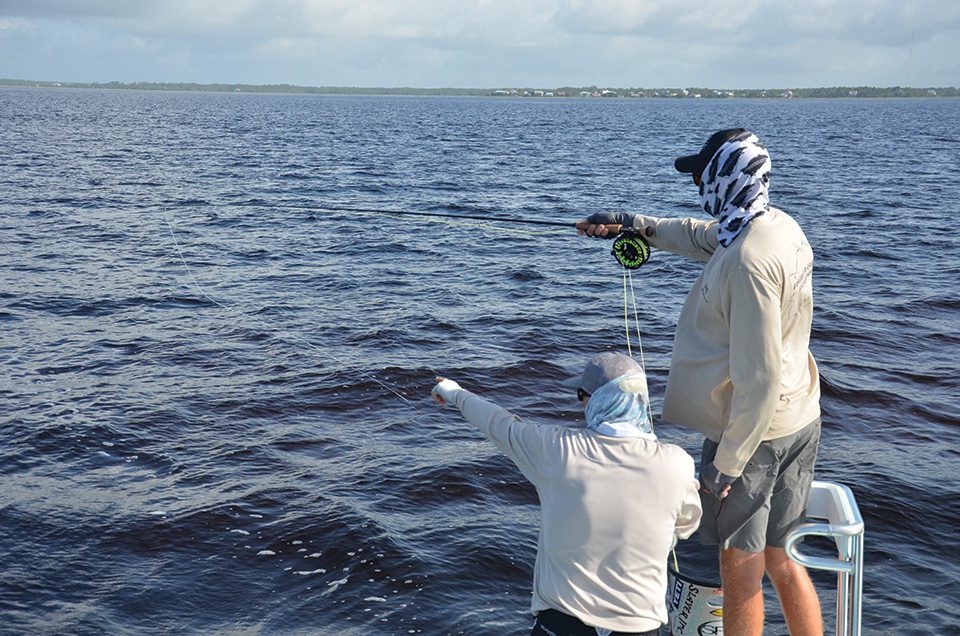Every angler knows that fishing sunglasses are polarized sunglasses. Whether you’re slinging flies on a tiny brook trout stream or trolling a spread on the Gulf Stream, sunglasses are a must to protect your eyes, both from the sun’s harmful rays and errant hooks. Polarized glasses block the glare, which allows for increased visibility beneath the surface.
If you’ve ever tested the difference between polarized and non-polarized glasses while looking into the water, you’ve seen the difference. The benefits of polarized lenses to anglers are obvious. They allow you to see bait, structure and even fish you would never have seen without them. But how do they work? What is this magic technology that allows you to see beneath the waves?
Let’s start with the nature of light. When light from the sun hits a horizontal surface, it is reflected horizontally and concentrated. This is the “blinding glare” you experience as light bounces off the water, a snow bank or a car hood. Even when reflected light is non-uniform—meaning it is refracted at different angles—like off choppy or moving water, it still causes glare that blinds your eyes to what lies beneath the surface.
Polarization, which is achieved in glasses via a chemical coat during manufacturing, works kind of like the blinds on your windows. The chemical is laminated in a vertical pattern. When horizontal reflections hit the lens, they are blocked by the vertical laminate pattern, which eliminates the glare that would otherwise reach your eyes. Reduced glare allows for clearer visibility above and below the surface. Polarization also reduces eye fatigue and blocks harmful UV rays.
Most of the time, you get what you pay for when you purchase polarized glasses. Inexpensive sunglasses might be polarized, but usually the layer of chemical laminate is thin and stamped onto the outside of the lens. Initially, these lenses might work just fine, but over time the laminate will rub off through normal use. If you’ve had a pair, you know it when they are no longer protecting your eyes or performing the way they should be.
Higher quality polarized lenses often protect this laminate layer between two layers of lens material, where it cannot be scratched or rubbed away. Also, a thicker polarized layer blocks horizontal light more effectively.
The one drawback to polarized glasses is with some LCD displays. Your phone, your GPS, your sonar and the display on the pump at the gas station, all of these necessary technologies feature LCD displays. Generally, they are also polarized, with light emitted in the same direction. Your polarized shades might block this light, depending on the orientation, which means you can’t see what’s on the screen. In the fishing industry, where all the customers wear polarized glasses, most electronics manufacturers have taken steps to solve this issue. If you’re at the gas pump and you are unable to see the display, try taking your glasses off.
